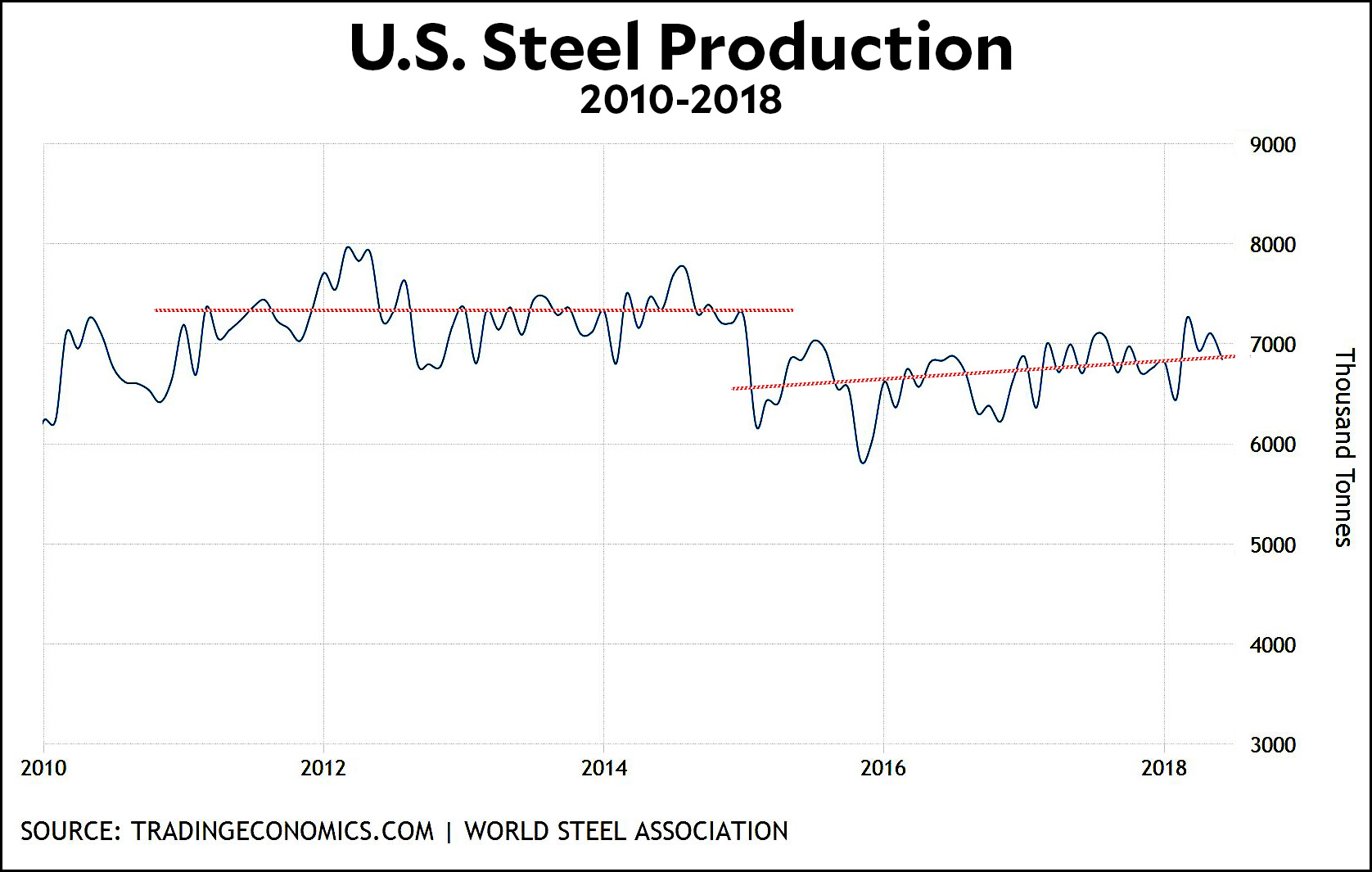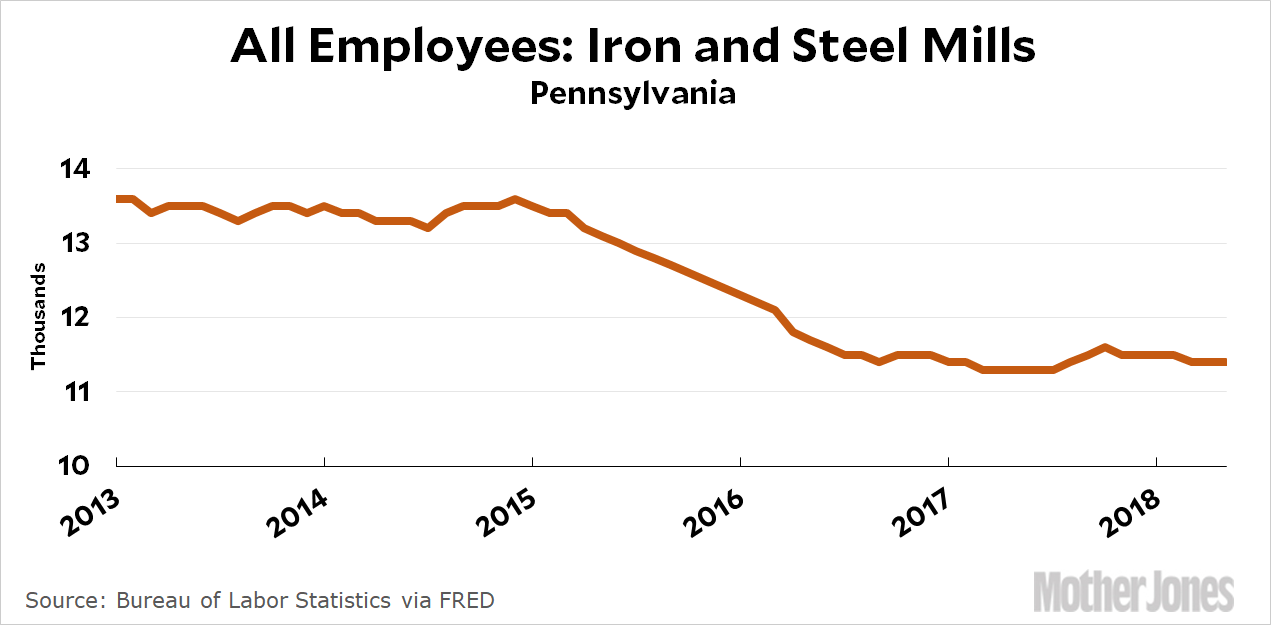Here is monthly raw steel production in the United States since the end of the recession in 2009:

The US averaged about 7.3 million tonnes of steel production per month between 2010-2014. That dropped to about 6 million tonnes in 2015, and we’ve been slowly working our way back upwards ever since. We’ve continued making small increases over the past year, but total production is still barely 6.9 million tonnes per month, which is considerably less than in the entire 2010-2014 period.
Here is iron and steel mill employment in Pennsylvania through May 2018:

To summarize: Overall steel production in the US has been increasing steadily but very slowly since its collapse in 2015. Capacity utilization has been running between 60-70 percent since the end of the recession and is currently at 76 percent, which suggests there’s unlikely to be a major boom in new plant construction. Employment in the steel industry in Pennsylvania has declined by about 2,000 over the past three years and has been dead flat since Donald Trump became president. Despite all this, Trump still fantasizes that he’s the steel king:
Pennsylvania has to love Trump because unlike all of the others before me, I am bringing STEEL BACK in a VERY BIG way. Plants opening up in Pennsylvania, and all over the Country, and Congressman Lou Barletta, who is running for the Senate in Pennsylvania, is really helping!
— Donald J. Trump (@realDonaldTrump) August 2, 2018
Kinda sad.
















